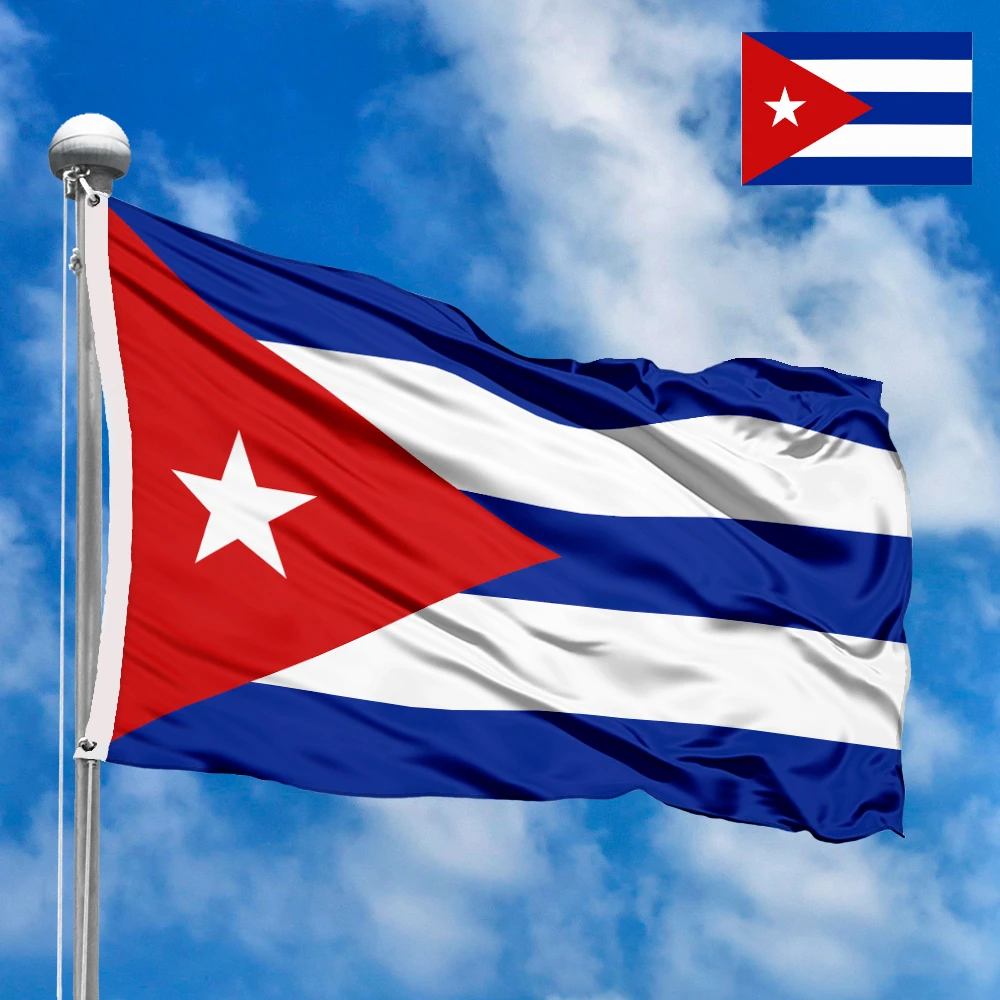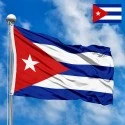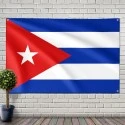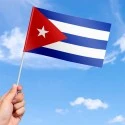The national flag of Cuba is a powerful and evocative symbol, steeped in the nation's history of struggle, revolution, and enduring independence. Known as the "La Estrella Solitaria" (The Lone Star), its design is a masterful blend of simple geometry and profound symbolism that tells the story of a people's fight for freedom and their aspirations for a sovereign future. Far more than a mere national emblem, the flag is a beacon of hope and a source of immense pride for every Cuban, representing their resilience and unique identity.
A Detailed Look at the Flag's Design and Symbolism
The flag of Cuba is composed of five equal horizontal stripes and a red triangle on the hoist side. The stripes alternate between blue and white, with three blue stripes and two white ones. On the hoist side, a vibrant red equilateral triangle contains a single, brilliant white five-pointed star.
Each of these elements is laden with deep symbolic meaning, reflecting the core principles of the Cuban nation:
-
The Blue Stripes: The three blue stripes represent the three administrative departments into which the island was divided during the colonial era: Eastern, Central, and Western. They also symbolize the three fundamental ideals of the Cuban nation: liberty, fraternity, and equality. The blue color itself is a tribute to the blue sky over the island and the clear, serene waters that surround it, a constant reminder of its unique geographical position.
-
The White Stripes: The two white stripes stand for the purity of the revolutionary cause and the noble aspirations for a just and peaceful future. They represent the strength of the ideals and the light of justice and virtue that guided the revolutionaries.
-
The Red Triangle: The red equilateral triangle, a symbol with masonic roots, represents strength, equality, and the blood shed by the patriots in their struggle for independence. Its color is a tribute to the valor, courage, and sacrifice of the Cuban people who fought for their sovereignty. The triangle's shape, with its three equal sides, symbolizes the three pillars of the revolutionary ideal: liberty, equality, and fraternity.
-
The White Lone Star: The single, five-pointed white star, known as "La Estrella Solitaria," is the most iconic element of the flag. It symbolizes absolute freedom and independence. Its position at the center of the red triangle represents the sovereign state of Cuba, shining brightly and independently among the other nations of the world. The star is a powerful and constant reminder of the nation’s solitary struggle for its rightful place among free nations.
Dimensions and Proportions
The official flag of Cuba has a width-to-length ratio of 1:2. The five horizontal stripes are of equal height. The red triangle is an equilateral triangle, meaning all its sides are of equal length. The white star is perfectly centered within the triangle, and its diameter is carefully proportioned to occupy the ideal amount of space, ensuring visual harmony and a balanced design. The precise dimensions and proportions are a matter of national law, signifying the importance of the flag as a symbol of statehood and national identity.
The Genesis and Adoption of the Flag
The history of the Cuban flag is inextricably linked to the island's fight for independence from Spain. The flag's design was first conceived in 1849 by a group of Cuban exiles in New York City, including the Venezuelan general Narciso López and the poet Miguel Teurbe Tolón. They were seeking to liberate Cuba from Spanish rule and unite it with the United States. Tolón is credited with designing the final version of the flag, which was first raised in Cuba in 1850 during one of López’s failed liberation attempts.
The flag was officially adopted as the national banner on May 20, 1902, when Cuba declared its independence and became a republic. This moment marked the culmination of decades of struggle and sacrifice, and the flag became a symbol of the newly won freedom. The design, however, has remained unchanged since its inception, a testament to the enduring vision of its creators and the unwavering will of the Cuban people.
Meaning and Significance for Citizens
For the people of Cuba, the flag is not just a symbol of their country; it is a profound representation of their history, their sacrifices, and their hopes for the future. The flag is a central feature of national life, proudly displayed on government buildings, schools, and homes, especially during national holidays such as Independence Day and Revolution Day on January 1st.
The flag’s symbolism of liberty and independence resonates deeply with the populace, serving as a reminder of the values that unite them. It is a powerful symbol of defiance against foreign intervention and a beacon of national sovereignty. For Cubans living abroad, the flag is a tangible link to their homeland, a source of community solidarity, and a powerful emblem of their identity. It embodies the spirit of resilience, a constant reminder that despite past struggles, the nation's dream of a free and prosperous future remains strong.
Interesting Facts
-
The Cuban flag’s design, with its alternating stripes and prominent triangle and star, bears a striking resemblance to the flag of Puerto Rico. The Puerto Rican flag was created a few decades later by a group of exiles inspired by the Cuban design, with the colors of the stripes and the triangle reversed.
-
The flag's first appearance in Cuba was a result of a failed military expedition led by Narciso López. Despite the failure, the flag became a powerful symbol for subsequent revolutionary movements.
-
The "lone star" is an allusion to the star of Texas, as the original creators of the flag envisioned Cuba as a new "Lone Star Republic" that might one day join the United States. This historical context adds a fascinating layer of complexity to its symbolism.
-
The red triangle on the flag has a strong masonic influence, as many of the early Cuban revolutionaries, including López, were masons. The triangle is a classic masonic symbol for strength and equality.
-
The flag’s official debut came after the end of the Spanish-American War and the subsequent American occupation, when Cuba finally gained formal independence in 1902. The first time the flag was hoisted at the Castillo de los Tres Reyes del Morro in Havana, it was a moment of profound national significance.
In conclusion, the flag of Cuba is a beautiful and complex tapestry of history, struggle, and national pride. Its design and colors tell a comprehensive and moving story of a nation’s birth, its enduring values, and its unique place in the world. It is a powerful emblem of national identity, a reminder of its unique struggles, and a source of profound pride for all Cubans.
In the demonstration images, full-size flags are shown with proportions of 2:3, and hand-held flags with proportions of 1:2.







 Waving flag
Waving flag
 Sizes:
Sizes:
 Round flag
Round flag
 Sizes:
Sizes:
 Rectangular flag 2:3
Rectangular flag 2:3
 Sizes:
Sizes: